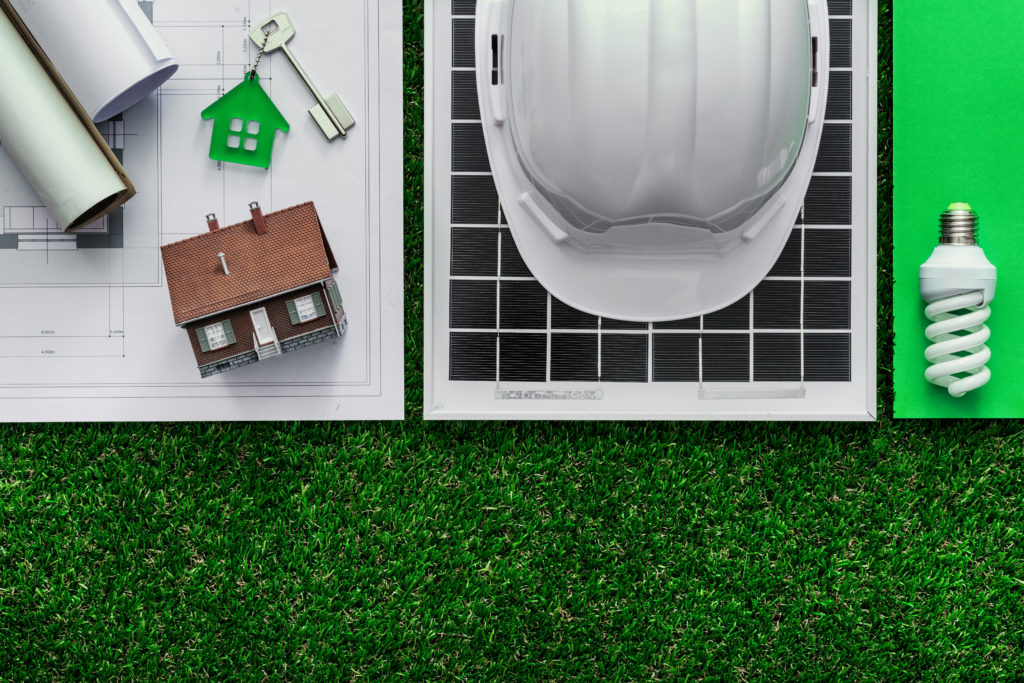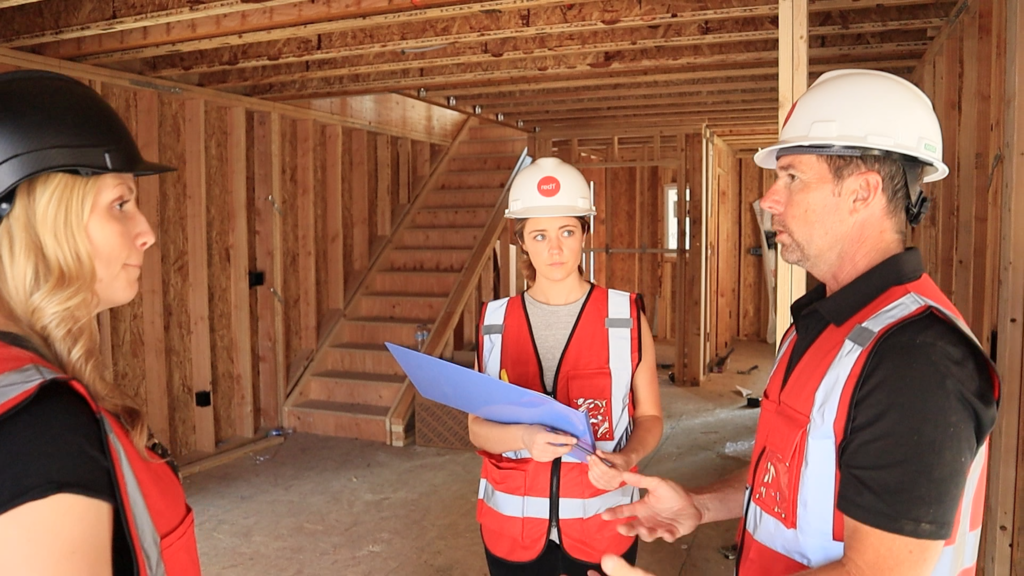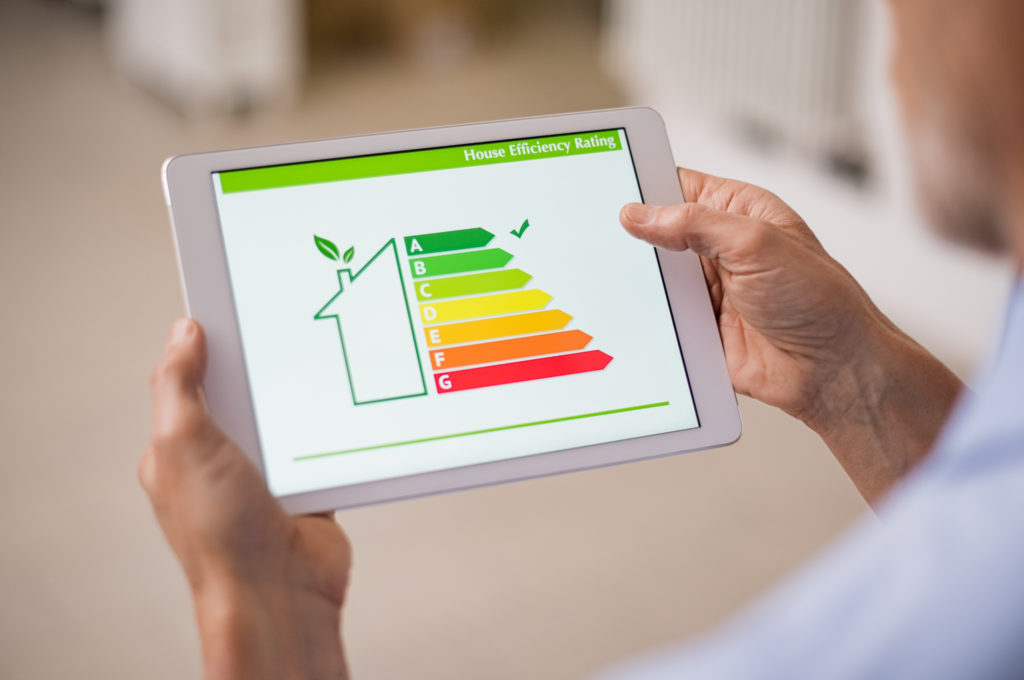The Sustainable Building As the Solution in Today’s Urban Planning
More than ever, the world is grappling with the increase of global warming. In response, many industries are considering how their current policies and practices may be contributing to these issues—and the building industry in particular has a great deal of considerations to make. The building industry is one of the leading exacerbators of carbon emissions, material waste, and air quality decline. In fact, according to the U.S. Green Building Council, the “built environment” is responsible for 72% of electricity consumption and 38% of carbon emissions. As such, calls for more sustainable buildings are increasing in urgency, and experts feel that sustainable buildings are the solution to environmental problems in today’s urban planning.
What Does Sustainable Building Mean?
Sustainable building has a number of definitions, and people often confuse the term with “green building.” However, there is a key difference between the two terms. According to Iota Communications, “Sustainability is a broad concept that refers to a building’s overall ability to provide a comfortable, healthy, and productive environment over the long term without negatively impacting the environment.” Unlike “green building,” a sustainable building does not just prioritize the environment. Instead, sustainable building accounts for human wellbeing and financial outcomes as well.
For example, by placing windows at strategic angles, sustainable builders offer increased access to natural light throughout the day. While this design element improves environmental outcomes by decreasing the amount of electricity required for lighting, it also provides both physical health and mental health benefits for homeowners. Furthermore, a sustainable building should be accessible, attainable, positive for the community, and comfortable to live in.
Whether you are a prospective homebuyer, real estate developer, or urban planner, the concepts of sustainable building should be on your mind throughout all stages of the building process. Read on to learn more about the history of sustainable design and how to incorporate it into your home.
History of Sustainable Building
Interestingly, the notion of sustainable building did not begin with the building industry itself. Instead, it arose from the publication of Rachel Carson’s book Silent Spring, which highlighted the dangers of pesticides. Design with Climate by Victor Olgyay and Design with Nature by Ian McHarg followed shortly after. These books encouraged architects to factor in a home’s regional climate differences, solar elements, and different building orientations to better control temperature naturally—all of which contradicted the heavily stylistic Modernist design movement that was popular at the time. Though these new ideas were not widely accepted when they were first released, the seeds of change were planted, and the first Earth Day was held in 1970.
The 1970s oil crisis further spurred the movement towards sustainable building. For the first time, many Americans became aware of the detrimental impact of overusing cheap energy resources. The extreme shortage of fuel, skyrocketing prices, and environmental cries of concern finally led to the establishment of the Department of Energy in 1977.
These changes in the world led to changes in design. For example, before the energy crisis of the 70s, most buildings relied heavily on artificial lighting. Commercial buildings in particular would commonly overuse fluorescent lights spread across the ceiling. The nonstop buzz of these lights drained energy throughout the entire day. After the energy crisis, however, building operators began shutting off some of the lights to preserve costs. This operational change led to uneven and missing sections of lighting. As these gaps were both annoying and functionally problematic for the building users, architects began to reconsider alternative methods of design to encourage more natural lighting.
Great advancements have occurred since this time. In 1993, the U.S. Green Building Council was formed as a non-profit that promotes sustainability in building design, construction, and operation. Its trademark sustainable building certification, the Leadership in Energy and Environmental Design (LEED) program, began this same year. LEED evaluates a building’s energy efficiency, water efficiency, indoor air quality, site selection, access to public transportation, regional climate considerations, and material use. These categories have a major impact on the environment, financial operations of the building, and the health and wellbeing of the people who live and work inside the building.
The Rising Importance of Building Sustainably
Building sustainably is more important than ever, as we race to meet calls from the United Nations to prevent atmospheric temperatures from rising more than 1.5 degrees Celsius above pre-industrial levels. In fact, world leaders recently met at the COP26 environmental conference in Glasgow, United Kingdom. At this summit, leaders discussed these urgent climate goals and assessed whether further action should be taken.
Building sustainably is not only important for global outcomes. It also has local importance— especially in an urban city like Denver, Colorado. Denver is officially classified as a “Heat Island,” meaning it is considerably hotter than surrounding areas due to the crowded buildings, rapidly rising urban population, and lack of trees downtown. Future predictions show that there will be even more days of extreme heat in Denver throughout the upcoming years, and this number will only continue to increase over time. The heat will greatly impact individuals experiencing homelessness and those with underlying health conditions.
Furthermore, more extreme weather events are occurring in Denver than ever before, including forest fires and mudslides. These issues, yet again, have an effect not only on the environment but also on the human beings who live in the community.
The Principles of Sustainable Buildings
Whether you are in the real estate and construction industry, or you are a prospective homeowner looking to purchase a new construction home, you should strive to achieve the principles of sustainable building.
Optimized Site Potential
Before any construction takes place, the team should select a site that minimizes the amount of disturbance to the natural environment. You might consider re-using brownfield sites, retrofitting existing properties, or building only on sites that already have impervious surfaces in place. It is also important to consider the surrounding neighborhood and the site’s access to public transportation, green spaces, and walkable areas. These elements lead to better environmental outcomes by decreasing car usage, and they also create a feeling of community togetherness.
Maximized Energy Use
Energy efficiency will not only improve environmental outcomes. It will also increase the quality of life for residents of the home and lead to lowered utility costs. When building or purchasing a home, consider the building’s orientation towards the sun and the use of materials that maximize heat absorption during the winter and heat reflection during the summer. Investing in high-quality windows can also help provide a tightly sealed building envelope that prevents energy loss. All of these energy-efficient steps will help to create sustainable buildings.
Protection and Conservation of Water
Living in a climate as dry as Denver’s means that water conservation is a high priority for sustainable building. Whether you are looking for a new home or are in the process of building one, you should ask for the installation of high-efficiency fixtures that prevent leaks and improve water quality. You should also landscape your property appropriately with native plants that can thrive in the local weather conditions. Furthermore, homeowners should consider ways—both in the design of the home and the operation of the home afterward—to prevent excess water runoff. However, it is important to search for any local policies that dictate how you should handle water.
Enhanced Building Space and Material Use
From the machinery used in the building process itself to the materials of the home, homeowners and architects should prioritize the use of recyclable and renewable items. You should avoid using toxic materials in order to improve the health outcomes of the construction team and the future occupants of the home. Volatile Organic Compounds (VOCs) can be found in a number of materials. VOCs are often carcinogenic, and they can lead to a number of health problems for homeowners. By researching healthy building materials beforehand, homeowners can take charge over their health inside of their homes.
Improved Indoor Environmental Quality (IEQ)
Many people are surprised to learn that indoor air contains 2 to 5 times as many pollutants as outdoor air. These pollutants can cause a number of health issues. Some of these issues include allergies, asthma, migraines, eye strain, mental health decline, and other respiratory illnesses. To improve indoor air quality, homeowners and builders should take steps to ensure a well-sealed building envelope. A well-sealed building envelope will help to prevent moisture that allows for fungi, bacteria, and mold to grow. Simultaneously, it is also important to invest in the right HVAC system. A high-quality HVAC system can improve healthy air exchange in the home. Air exchange will keep VOCs from getting trapped inside with homeowners and their loved ones.
Advanced Operational and Maintenance Practices
As mentioned above, sustainable design is a process that must occur at every step of a property’s lifecycle. Regardless of how sustainably a home may have been built, homeowners should take steps to ensure the home continues to operate to a high standard over time. Homeowners and occupants should be trained in how to effectively operate their building systems, recognize signs of moisture and other faults, and identify the healthiest products to use in the home. Though maintenance is expected to be lower in high-performance homes due to increased durability, it is still important for homeowners to keep up with ongoing maintenance efforts. By encouraging user knowledge and operational upkeep, a home will have a better chance of performing to its full potential over time.
Applying the Principles in Construction
Everyone in the real estate industry should incorporate sustainable building techniques— including those who design the homes, those who build the homes, and those who live in the homes. Take a look at the list below to learn how to apply the principles of sustainability for urban planning, owning a home, and selecting sustainable building materials.
For Urban Planning
Urban planning is the process of developing and designing an urban area in a way that improves problems and meets identified needs. You can apply sustainable building principles to urban planning by promoting increased walkability, nearness to green space, and access to available infrastructure. Sustainable buildings are also built vertically instead of horizontally, which encourages less urban sprawl. By building property upwards rather than outwards, you can cause less disturbance to natural land during construction and allow a neighborhood to remain more walkable for residents.
For Homeowners
Prospective homeowners can utilize the concepts of the sustainable building by partnering with a home building company that prioritizes environmental and human wellness throughout the construction process. Homes should have a tight building envelope, solar systems or other strategies to decrease energy waste, less water runoff, and a properly sized and high-quality HVAC system. By learning about these principles, homeowners can enter the process fully informed about how to create a healthy home.
Sustainable Building Materials
When purchasing the materials needed for building a property, price is not the only factor that matters. In order to contribute to sustainable building efforts, consumers should consider the following questions before purchasing a building material:
Is the material locally sourced?
A locally sourced material does not need to travel as far during the shipping process, and it will therefore produce fewer carbon emissions during its lifespan. Lengthy transport and shipping times cause many of the emissions from the construction industry. By choosing a locally sourced material instead, you will contribute to the local economy and lessen your home’s impact on the environment.
Is the material recyclable?
You might be surprised to learn about all the different types of materials you can recycle. You might need to go through extra steps or a special collection in order to recycle an item, which can occasionally cause confusion and discouragement. However, with a bit of planning about how, when, and where you will recycle a material, you can considerably lessen the amount of waste that comes from your home during its construction. If you are interested in learning more about different recyclable materials and the steps involved in recycling these materials, take a look at this great resource from Waste Management.
For more information on how to properly recycle, please check out Todays HomeOwner Guide on doing so which can be found here
Was the product recycled?
This question may seem similar to the previous question. However, there is a key difference: while the former question focuses on how you might recycle an item after using it, this question encourages you to select a product that was made from recycled materials beforehand. By completing a life-cycle analysis (LCA), you can determine how a product was sourced and recycled for its current production. Here is a quick guide on the components of an LCA. As a homeowner, choosing products made from recyclable materials is a great way to increase your home’s sustainability.
How durable is the material?
While sustainable building materials may cost slightly more at the moment of purchase, they can pay off more in the long run for your wallet and the environment. A durable product will have less of an impact on the environment by lasting longer before needing replacement— leading to less material use and less waste overall.
Is the manufacturer implementing sustainable business practices?
Before you buy material from a company, you should consider that company’s own business practices. If a company is not implementing sustainable practices throughout its chain of operations, you will only further contribute to environmental issues by purchasing a material from them.
Take a look here to learn more about why it is important to use sustainable building materials.
Why Should You Consider Building a Sustainable Home?
Developing, building, and buying homes can be an overwhelming process, even if you have plenty of experience. Adding sustainability into the mix creates even more elements for homeowners and professionals to consider. However, even though it may be a substantial change to make, teams should still push to pursue sustainable building. Take a look at the points below to learn why it is so important to build a sustainable home.
Last for a Lifetime
Sustainable homes last longer. They use higher-quality materials that will not need as much maintenance or replacement over time. Furthermore, architects design sustainable homes to fit in with their climate. This means that the homes are better fortified against the weather and will not suffer as much wear and tear.
Cutting-Edge Framing Techniques
Advanced framing techniques can help save homeowners money on building materials. One example of material-saving and cost-saving techniques is the use of wider spaced framing, which requires less lumber and less deforestation while still allowing for a securely built home. Take a look at these LiteHomes to see what a sustainable home can look like even when less wood is used during the framing process. As you will see, wider spaced framing still provides the necessary strength to support these homes, and they still look beautiful for homeowners once completed.
Less Energy Consumption and Save Money
Homeowners can enjoy lowered utility costs when living in an energy-efficient home. Furthermore, with less energy leakage, temperatures will remain more consistent in the home without the need for constant air conditioning or heating that drains the wallet.
Less Energy Waste
A tight building envelope will create a well-sealed home that suffers less energy loss. By preventing these energy leaks, homeowners can enjoy a high-performance home that has less of an impact on the environment.
Improving Resale Value
Surveys have shown that millennial homeowners place a high value on sustainability when making purchases. As millennials have now become the overwhelming majority of homeowners and prospective buyers, it is more important than ever to implement sustainable building practices and features into your home in order to increase its resale value. LEED certified homes, for example, receive higher valuations, spend fewer days on the market, and have fewer days of vacancy than traditionally built homes.
Taking Part in Building Better Environments
Building better environments is helping to change the world. Sustainable buildings and green building practices will allow you to give back to the environment and feel good about the home you build and live in for years to come.
Build Sustainably to Contribute to a Better Environment
Global warming is an urgent issue. In fact, the United Nations has repeatedly urged the world to come together to prevent global atmospheric temperatures from rising to irreversible levels. Furthermore, global leaders recently met at the COP26 conference in Glasgow to discuss whether the world was on track to meet these climate goals. After decades of studies and reports, it is more important than ever for individuals and businesses to take steps to contribute to a better environment.
As a prospective new construction homeowner, you can help support the process of building a better environment by considering sustainable building principles before, during, and after the build of your home. Though the process can seem stressful, learning about sustainable buildings can be a great way to remain empowered throughout the steps of building or purchasing your new home.
Builders can also join in on the efforts to create a better environment by learning about green building and sustainable building techniques. Though the building industry is often under pressure to meet deadlines and produce buildings for the lowest costs, there are many steps that industry professionals can take to build sustainable and financially attainable homes. Teams should take these steps throughout the entire building process, from start to finish. By communicating with the other members of the construction team and planning for sustainability ahead of time, change will be easier to implement.
Urban planners also have an important role to play in contributing to a better environment. As discussed above, sustainable building is a systemic approach to design. It does not work only on its own. Instead, it has to work as part of the larger urban environment. Teams should select sites that maximize walkability and increase access to green space. They should also design sites to add positivity to the local community and connect with existing infrastructure. Finally, urban planners should prevent urban sprawl by building upwards instead of outwards. All of these techniques will lessen carbon emissions and improve the quality of life for the people who live within the community.
Regardless of your position or career, you can help contribute to a better environment by building sustainably. You should focus on optimizing site potential, maximizing energy use, preserving water, enhancing building space and material use, improving indoor environmental quality, and considering advanced operational and maintenance practices. By implementing these changes, you can create long-term positive change for generations to come.
Learn more at redT Homes
Want to learn more about sustainable buildings? Check out our vision for a greener future.
Also feel free to learn more about how you’re probably recycling wrong and the modern homeowner’s guide found here.












